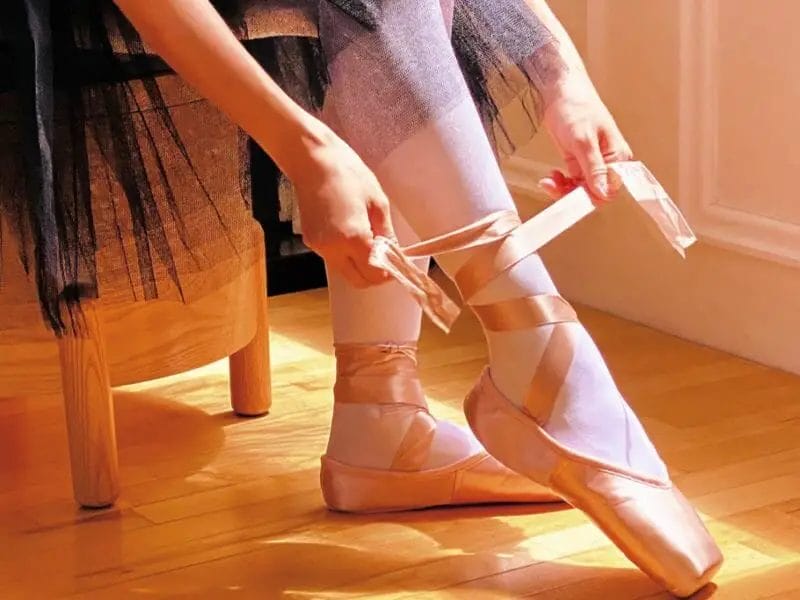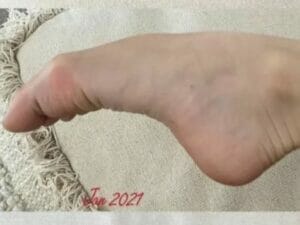Suppose you have watched a ballet performance or rehearsal. In that case, you will likely have noticed that all the dancers typically wear pink tights. Although this has always been the case, with dancers of all races included in the ballet world, it could leave one wondering why all ballet dancers wear pink tights.
Ballet tights were originally pink to match the skin tones of European dancers. Pink tights allow the audience to see dancers’ lines and muscles while covering the skin and allowing freedom of movement. There are questions around the relevance of pink tights in today’s diverse ballet world.
Ballet dancers began wearing tights around 1790, with the invention of tights. Since the dancers of the time were European, pink was the color that most closely matched their skin tone. If you wonder why the standard for ballet is still pink tights, you are not alone. Join us as we discover the details of why ballet dancers wear pink tights and learn about the discussions on this topic.

Why Do Ballet Dancers Wear Pink Tights?
Ballet came into being in around 1581, in Italy and France. Back then, dancers did not wear tutus and tights. Instead, they wore the full-length outfits that were the norm for everyday life. It was only around 1790 that tights were invented, and that is when ballet dancers began wearing them for performances. (When dancers began wearing tights for shows at this time, it caused quite a stir. More on that later!)
Since ballet was first performed in Europe, the dancers had light skin. Ballet tights were worn in pink to match the dancers’ skin tones as closely as possible. Using pink tights for ballet had the added advantage of seeing the dancers’ legs under the fabric.
When a dancer wears pink tights, we can see their muscles, lines, movements, and poses quite clearly beneath the material. The color contributes to the enjoyment of watching the performance and helps ballet teachers see which areas need improvement.
The idea behind having ballet dancers wear pink tights and other clothing items come from when all ballet dancers were European. Since their skin colors were mainly pale or rosy pink, having pink ballet attire helped extend the lines of their limbs, making them appear more graceful and elegant.
Having all dancers wear the same color tights allows uniformity within a ballet performance. In a ballet, all dancers are expected to look as similar as possible. Their hair, makeup, costumes, tights, and shoes look as uniform as possible to allow for a fluid, close-to-perfect performance. The uniformity is matched by the dancing, which is also meant to be as similar as possible.
Those who believe that all dancers should wear pink tights, no matter their skin color, believe that tradition is essential in an art form like ballet. There is a place for tradition, especially in something as historical as ballet. However, we should consider why tights are pink and whether they apply to dancers with different skin tones.
Why Are Ballet Tights Pink?
- They match the dancers’ skin tone
- They allow us to see the dancers’ legs
- They create continuity between the upper and lower body
- They look close to the skin color without looking nude
- They create a uniform look for all dancers
If these criteria apply to and are correct for all the dancers in a company or class, then pink tights are the proper match. If the requirements are not valid for every dancer, it could be necessary to consider using varied tones of tights.
What Color Tights Are Best For Ballet?
What color tights are best for ballet comes down to who is dancing, who is teaching, and who is watching. In a European ballet class of all-white dancers, it makes sense that the best color for tights is the traditional pink. The rosy color matches the skin tones of the dancers, and the pink tights allow the teacher to see the movements the dancers are making.
It may make more sense to have tights that match the dancers’ dark skin tones in a diverse ballet class or one that consists of people with dark skin tones. While it has long been accepted as the norm, audience members and dancers have begun to notice that the traditional pink tights may be offensive to some.
Precious Adams is a ballet dancer for the English National Ballet. At the tender age of twenty-three, she has decided to do away with the pink tights typically worn by professional ballet dancers and embrace brown tights instead.
She reasons that having dark arms and a dark face, with light pink tights on her bottom half, disrupts the lines of her body while dancing. She now wears brown tights that match her upper body and enjoys the same elongated, fluid look of her lighter-skinned colleagues.
Since all or most companies are now multi-racial, they are beginning to assess the situation and make decisions regarding the uniform of their dancers. Luckily for Precious, The English National Ballet has embraced the diversity and allowed its dancers to wear tights that match their skin tones.
With dance forms like jazz and contemporary embracing beige and tan tights, it may be time for the ballet world to come to the party and allow their dancers to do the same. Since the invention of tights in 1790, dancers have been pushing the boundaries and showing audiences what can be done with the freedom to perform and dress how they please.
So, what happened in 1790? Ballet dancer Maria Viganó, and her brother, shocked Austrian audiences when they performed wearing sheer white costumes with pink tights. The pink tights resembled their flesh color so closely that the audience thought they were naked. At that time, flesh-colored pink was banned, but it had become the standard by the end of the 19th Century.
In the mid-1980s, an African-American dancer, Lauren Anderson, began to rise in ballet fame.
It was quickly discovered that darker tights worked better for her. The company she danced for had never had a dancer of color before. They contacted the Dance Theatre of Harlem, known for having black dancers, for inspiration for her tights.
Since the invention of tights, they have caused a stir, and they continue to do so. If you are considering what color tights are best for ballet dancers, it is helpful to view these deciding factors:
- Do the tights merge with the dancer’s skin tone?
- Can we see the dancer’s legs beneath the fabric?
- Do the tights detract from the overall appearance of the performance?
- Do the tights help to enhance the dancer’s appearance?
Since ballet is primarily about aesthetic beauty, it should make sense to have tights that enhance and show the beauty of all the dancers involved.
Conclusion
Traditionally, ballet dancers wear pink tights to closely resemble a light skin tone without wearing a nude color. Since ballet originated in Europe, pale pink was a fitting color for dancers. Today, ballet is celebrated and enjoyed around the globe. The artform has welcomed dancers of different races, and many dancers of color have become principal dancers.
With the acceptance of multi-racial dancers into ballet, it may be time for teachers and companies to look more closely at the color of the tights and shoes that are made uniform. Since dark-skinned dancers have dark upper bodies, it follows that their tights should be in a similar shade as it is with light-skinned dancers. Wearing tights that match a dancer’s skin tone gives dancers flowing lines and a more polished and elongated overall look.



